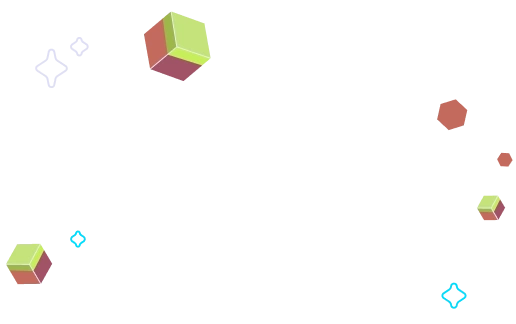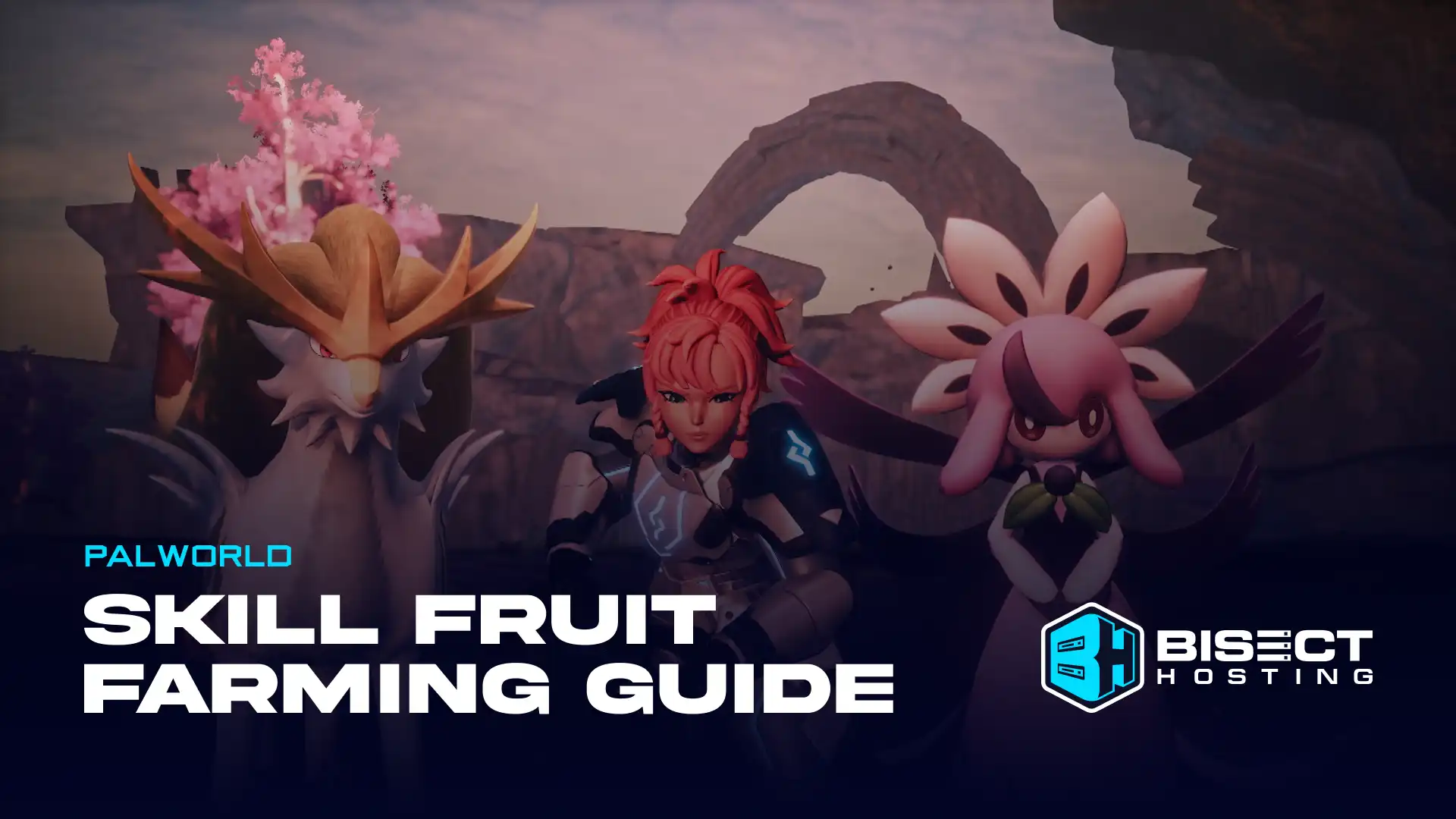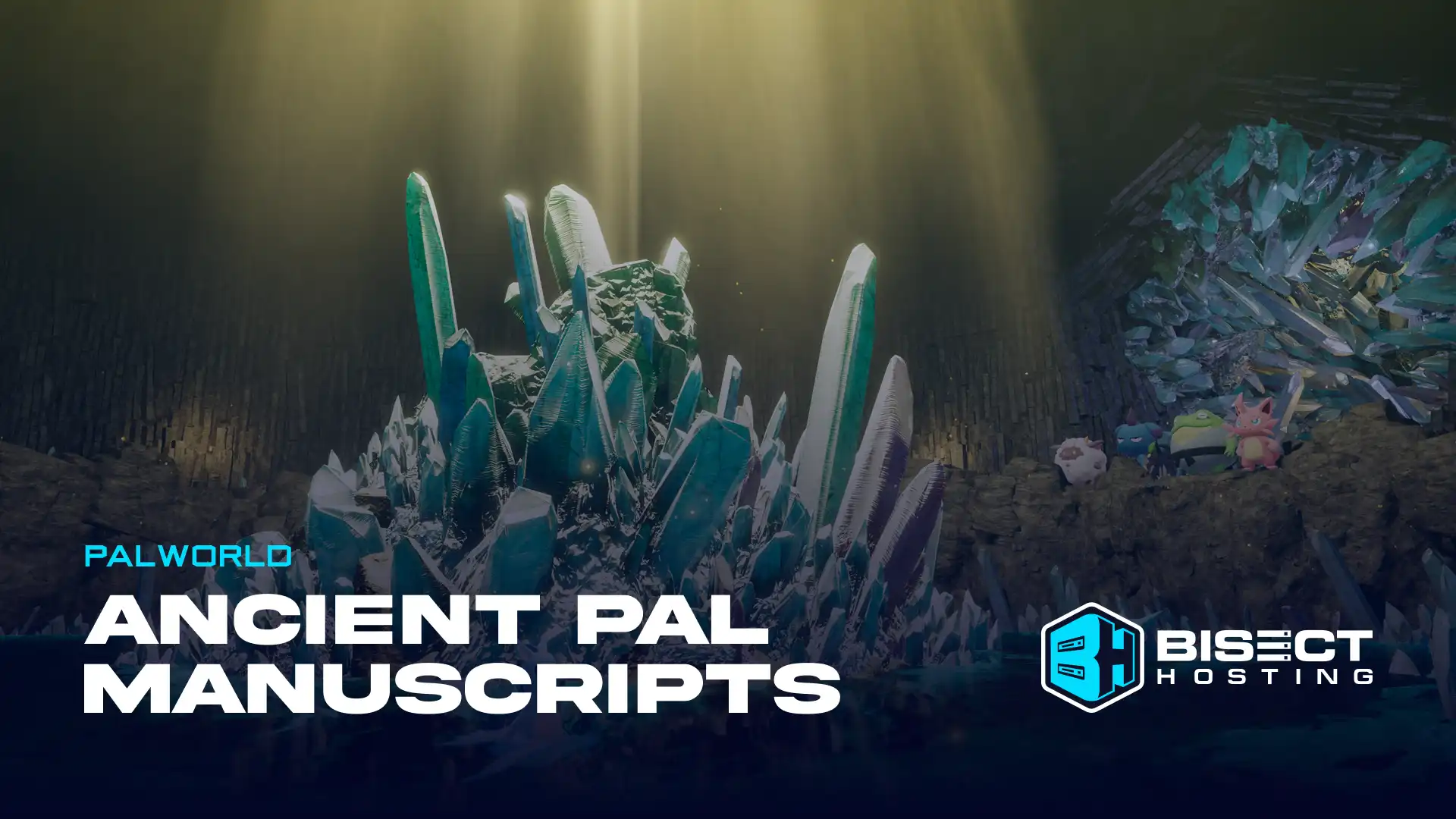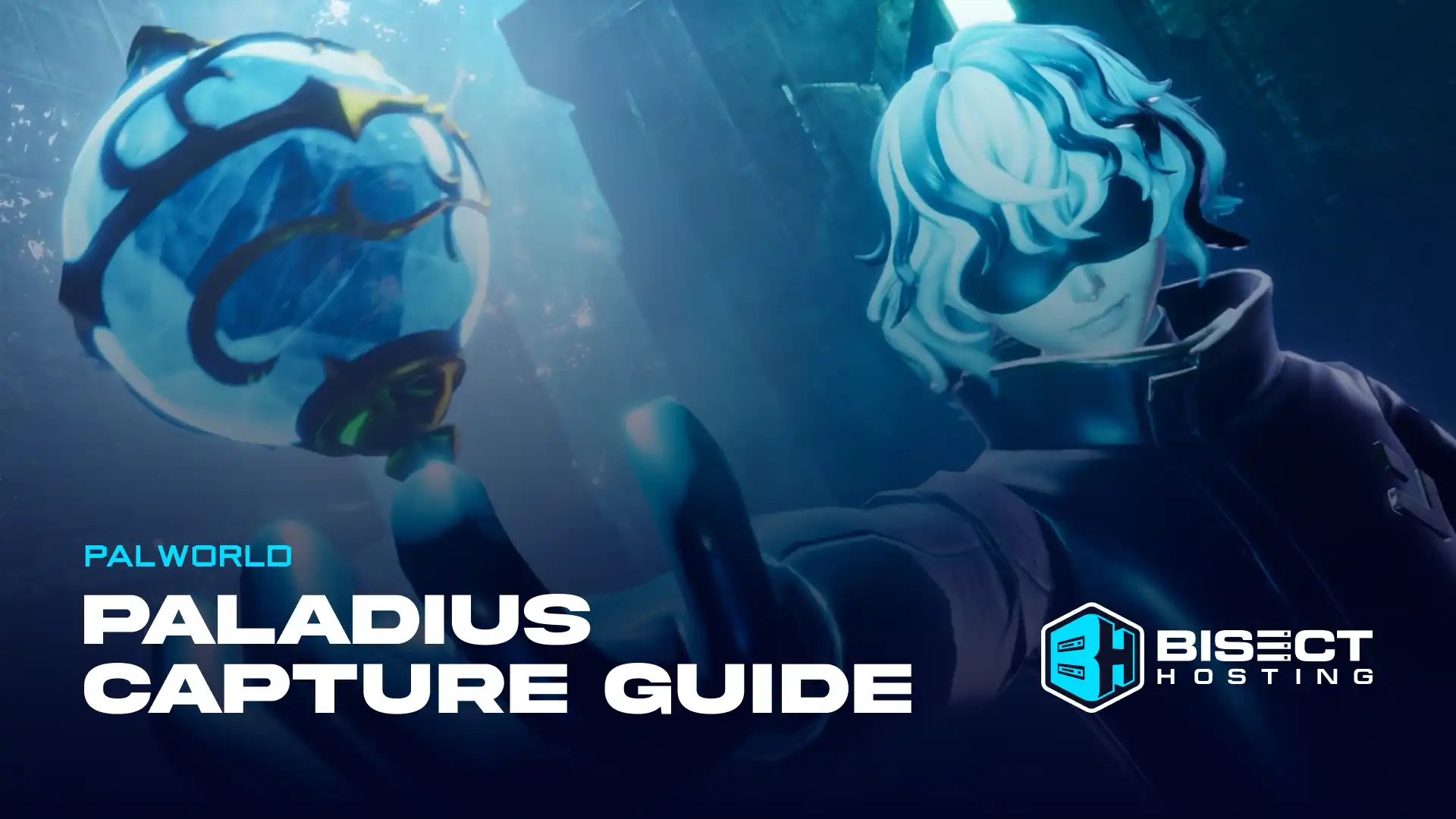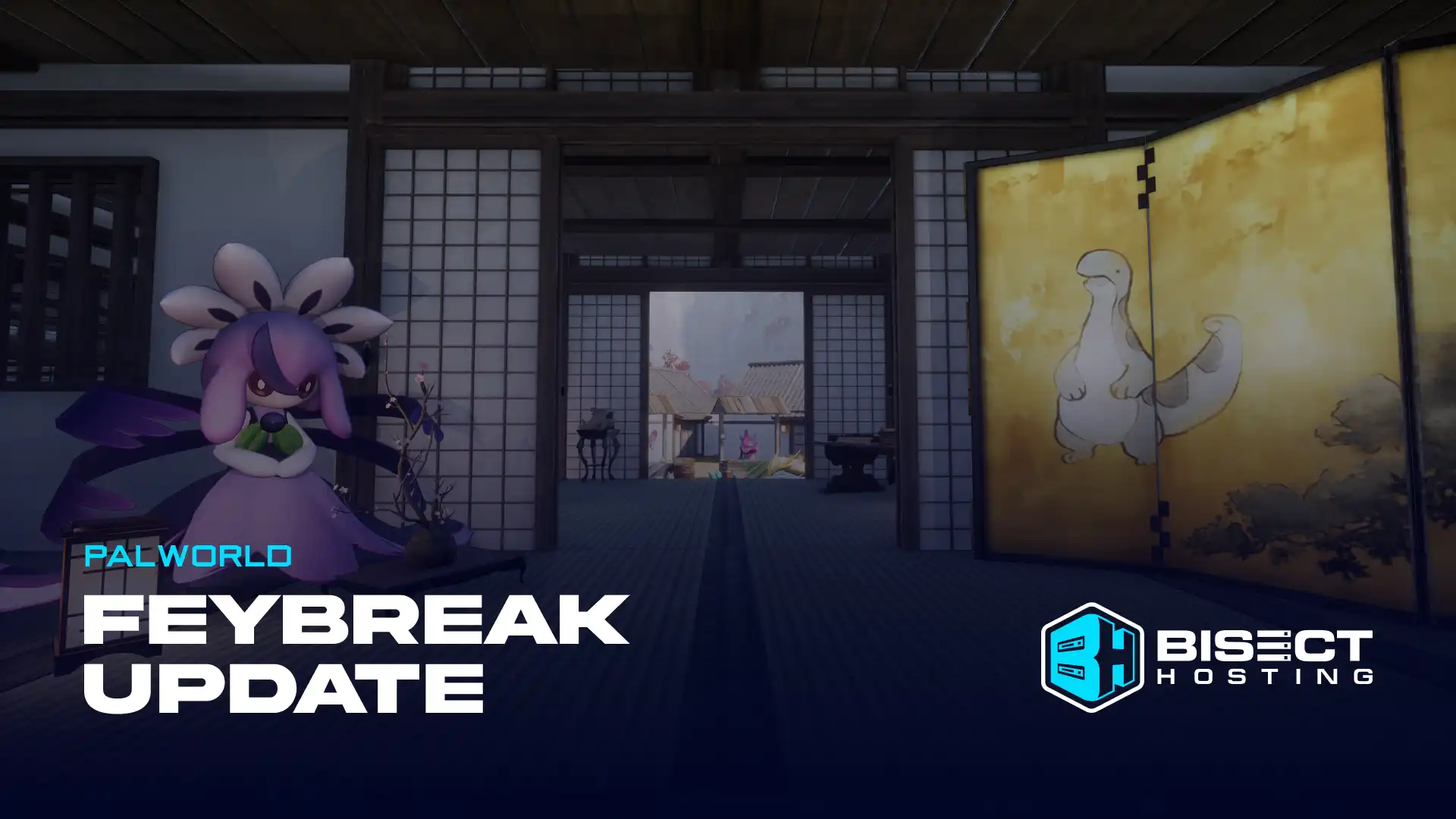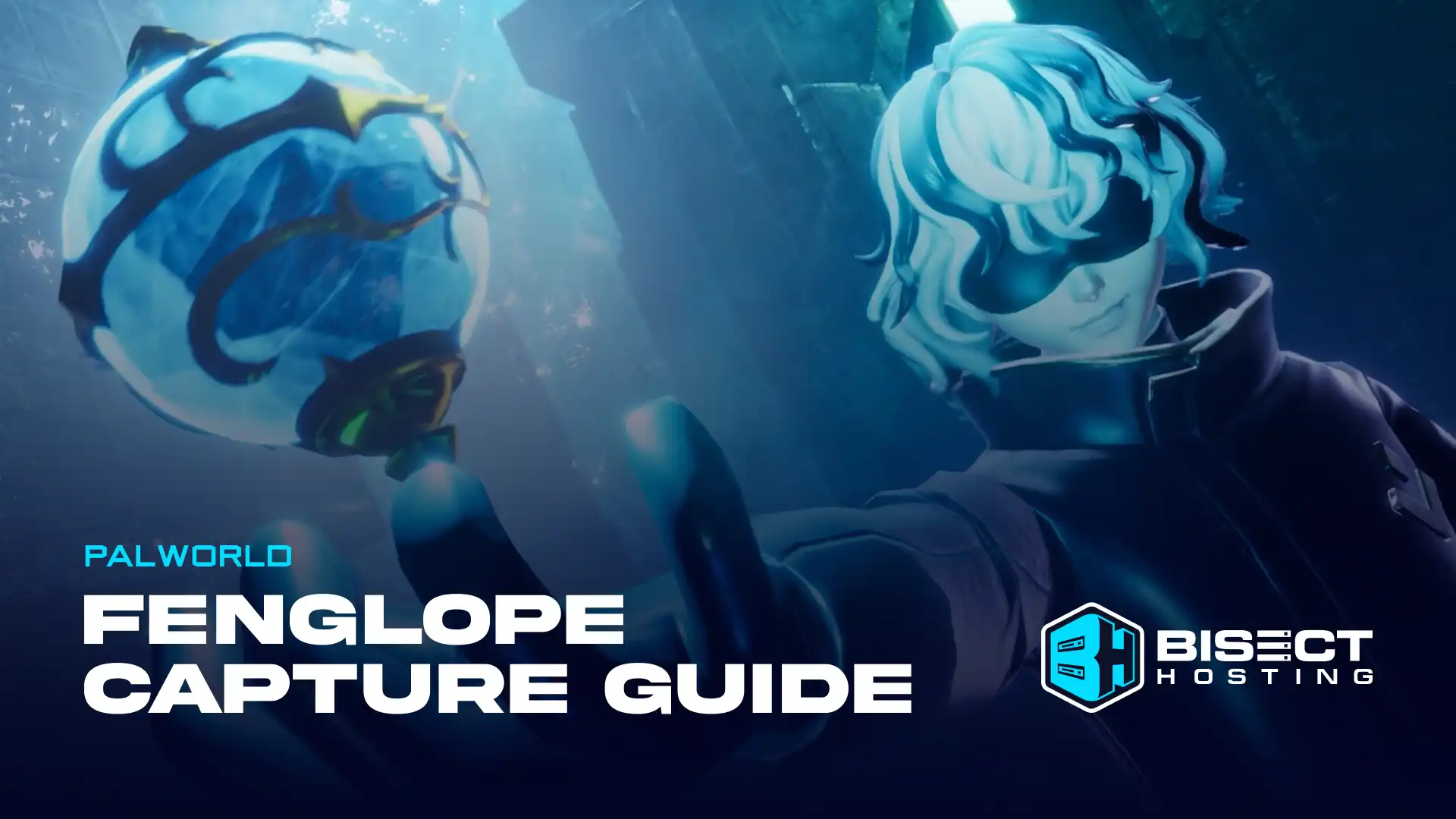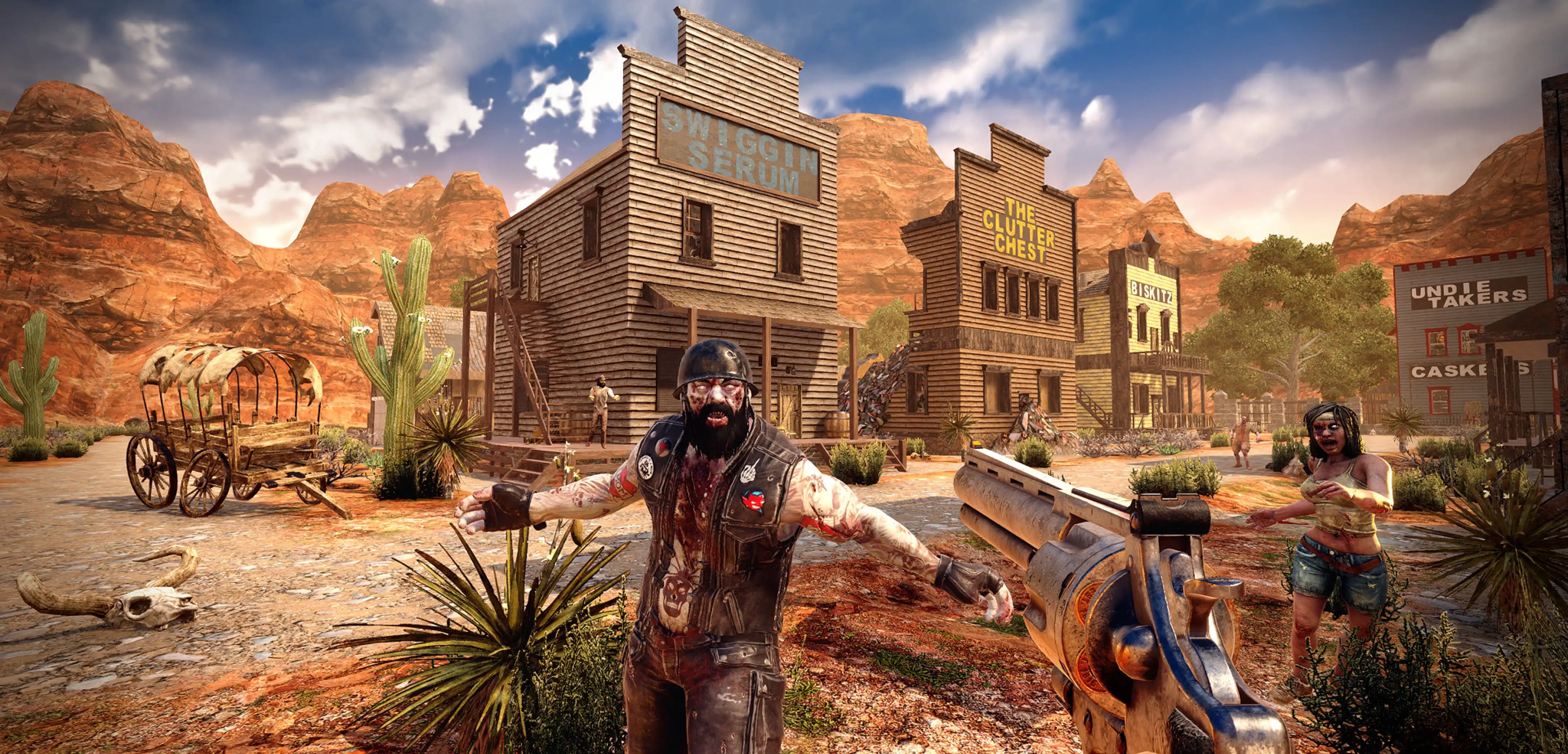
7 Days to Die 1.0 Survival Guide: New Features, Mechanics, & More
Posted on by
Are you a new 7 Days to Die player? Perhaps you’re returning to Navezgane with the game’s full release. Nonetheless, it’s important to give yourself the power of knowledge by understanding the game’s different features and mechanics through this 7 Days to Die 1.0 Survival Guide.
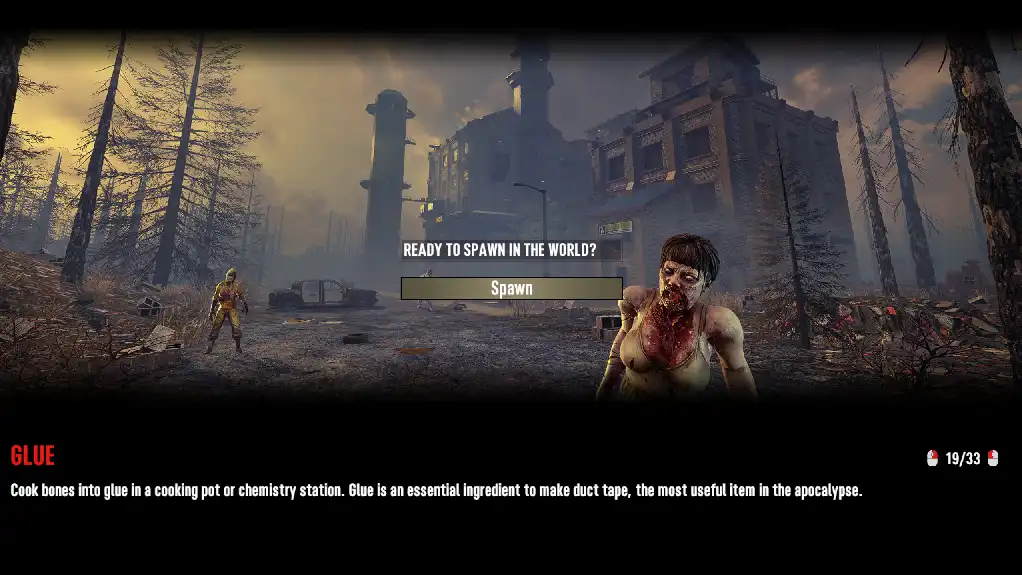 A player's survival in 7 Days to Die 1.0 typically depends on various factors. These elements range from the game's difficulty setting to selecting your preferred resource-gathering method.
A player's survival in 7 Days to Die 1.0 typically depends on various factors. These elements range from the game's difficulty setting to selecting your preferred resource-gathering method.
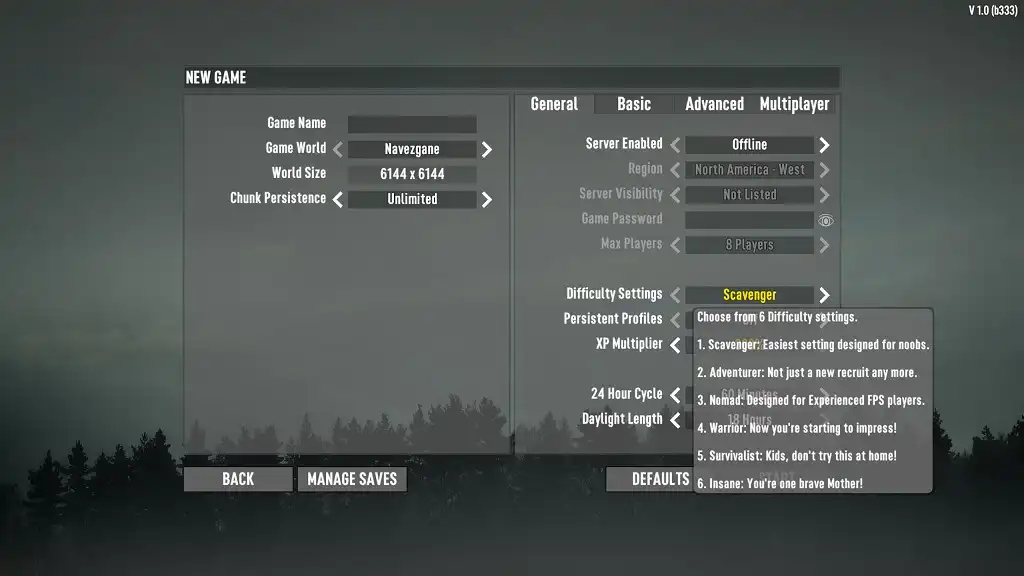 Every new player must choose a game difficulty by selecting a particular mode before loading the Navezgane map. Although the game does a good job of providing a brief explanation for each mode, below are some additional details you may not know about each difficulty setting:
Every new player must choose a game difficulty by selecting a particular mode before loading the Navezgane map. Although the game does a good job of providing a brief explanation for each mode, below are some additional details you may not know about each difficulty setting:
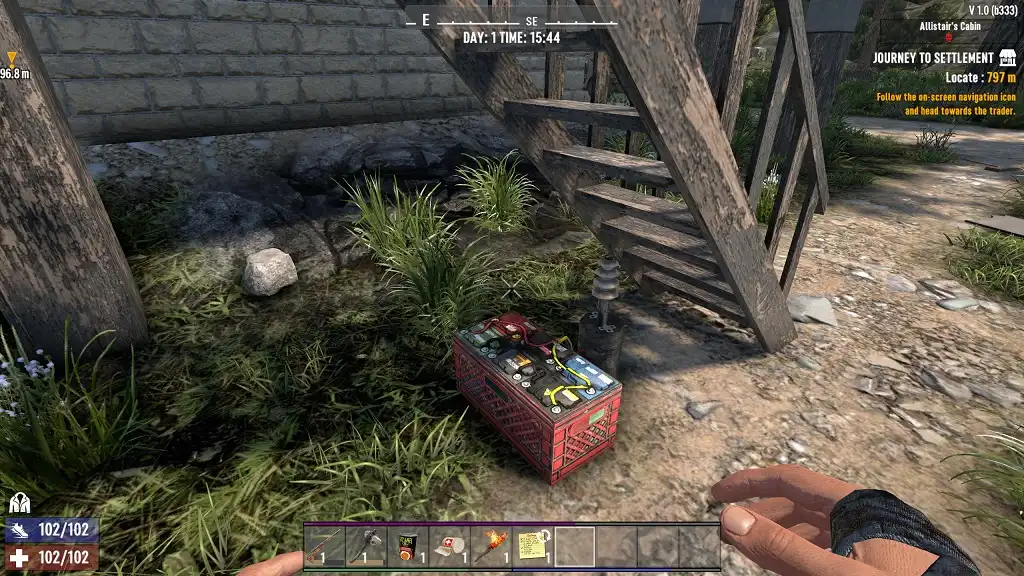 Electricity in 7 Days to Die is a must-have for any post-apocalyptic survivor. Without power, your traps, sensors, lighting fixtures, and other devices are no more than mere decorations in your base. Thankfully, setting up an electrical system in your base is relatively straightforward, albeit you must first fulfill some requirements.
For starters, you must have a power source, and 7 Days to Die offers some options, including the Battery Bank and Generator Bank. Remember to supply batteries or fuel to the power source so it can provide power to connected devices.
Next, use the Wire Tool to connect the power source to nearby devices. Once finished, activate the devices by interacting with the power source. If successful, your devices will come to life.
Additionally, each device requires a specific amount of power to function. Ensure that your power source can provide the necessary output to the connected devices. Otherwise, some of these units will cease functioning.
Electricity in 7 Days to Die is a must-have for any post-apocalyptic survivor. Without power, your traps, sensors, lighting fixtures, and other devices are no more than mere decorations in your base. Thankfully, setting up an electrical system in your base is relatively straightforward, albeit you must first fulfill some requirements.
For starters, you must have a power source, and 7 Days to Die offers some options, including the Battery Bank and Generator Bank. Remember to supply batteries or fuel to the power source so it can provide power to connected devices.
Next, use the Wire Tool to connect the power source to nearby devices. Once finished, activate the devices by interacting with the power source. If successful, your devices will come to life.
Additionally, each device requires a specific amount of power to function. Ensure that your power source can provide the necessary output to the connected devices. Otherwise, some of these units will cease functioning.
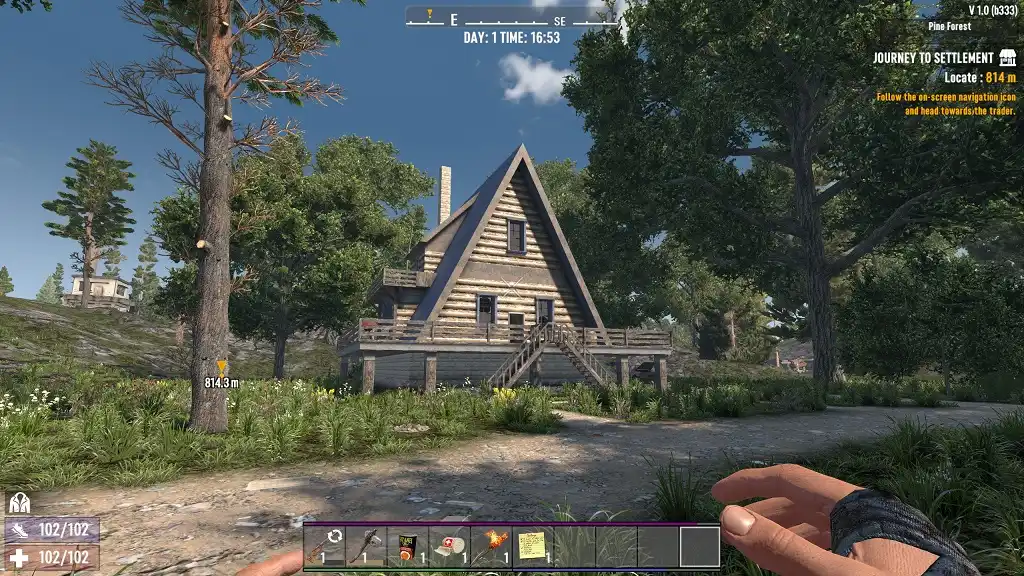 The base map for 7 Days to Die is Navezgane, a desolate world riddled with zombies and other threats. Navezgane is also a static map with various points of interest (POIs), which typically meet players with challenges and loot. Update 1.0 increased the number of POIs players can explore throughout the world map, including Tier 5 ones like the Haven Hotel, 7 Days Suites, and Navezgane Athletics Complex.
Apart from Navezgane, you can generate a random world seed through the main menu. As the feature's name implies, the random world generator creates a map based on various settings.
As of Version 1.0, the random world generator received various updates. These improvements include new biome layouts, visible zombie spawn points, and the return of the burnt forest biome.
The base map for 7 Days to Die is Navezgane, a desolate world riddled with zombies and other threats. Navezgane is also a static map with various points of interest (POIs), which typically meet players with challenges and loot. Update 1.0 increased the number of POIs players can explore throughout the world map, including Tier 5 ones like the Haven Hotel, 7 Days Suites, and Navezgane Athletics Complex.
Apart from Navezgane, you can generate a random world seed through the main menu. As the feature's name implies, the random world generator creates a map based on various settings.
As of Version 1.0, the random world generator received various updates. These improvements include new biome layouts, visible zombie spawn points, and the return of the burnt forest biome.
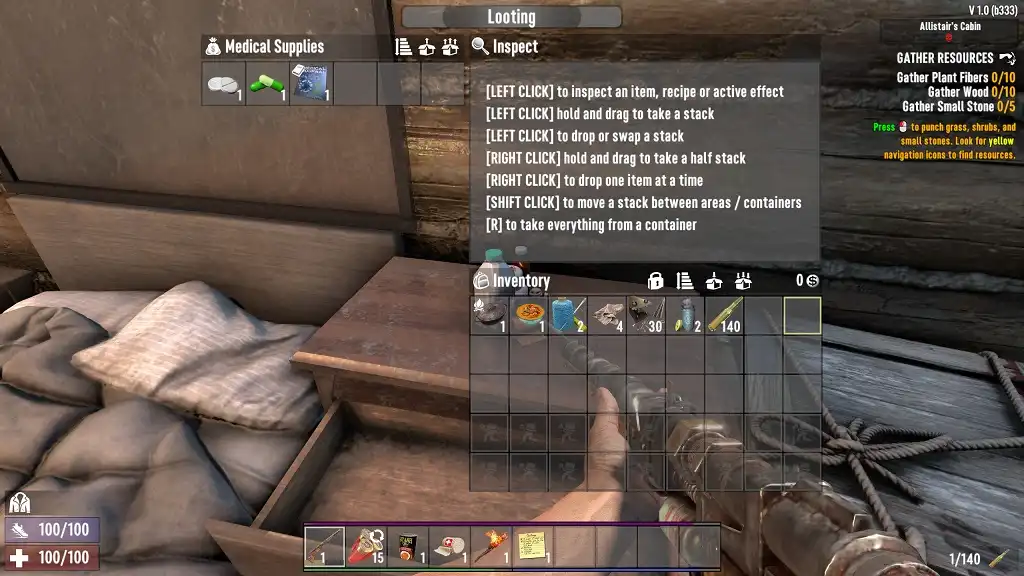 Like most games, the player dies when your character’s health falls to zero. However, death isn’t the end in 7 Days to Die. Instead, your character respawns at your last save point, which is probably next to your bedroll in your base. Nonetheless, your character may drop items upon death.
Note: Administrators can change Item drop upon death through the server settings.
Thankfully, various in-game items are available to help prevent an early death. In particular, you can find various restorative items, such as food and medical supplies, while exploring the world map.
Nonetheless, it's important not to be complacent, as various threats exist in 7 Days to Die. In addition to the typical zombie threat, falling, drowning, and other environmental effects can also reduce player health.
Note: Add points to the Fortitude Skill to increase maximum health.
Like most games, the player dies when your character’s health falls to zero. However, death isn’t the end in 7 Days to Die. Instead, your character respawns at your last save point, which is probably next to your bedroll in your base. Nonetheless, your character may drop items upon death.
Note: Administrators can change Item drop upon death through the server settings.
Thankfully, various in-game items are available to help prevent an early death. In particular, you can find various restorative items, such as food and medical supplies, while exploring the world map.
Nonetheless, it's important not to be complacent, as various threats exist in 7 Days to Die. In addition to the typical zombie threat, falling, drowning, and other environmental effects can also reduce player health.
Note: Add points to the Fortitude Skill to increase maximum health.
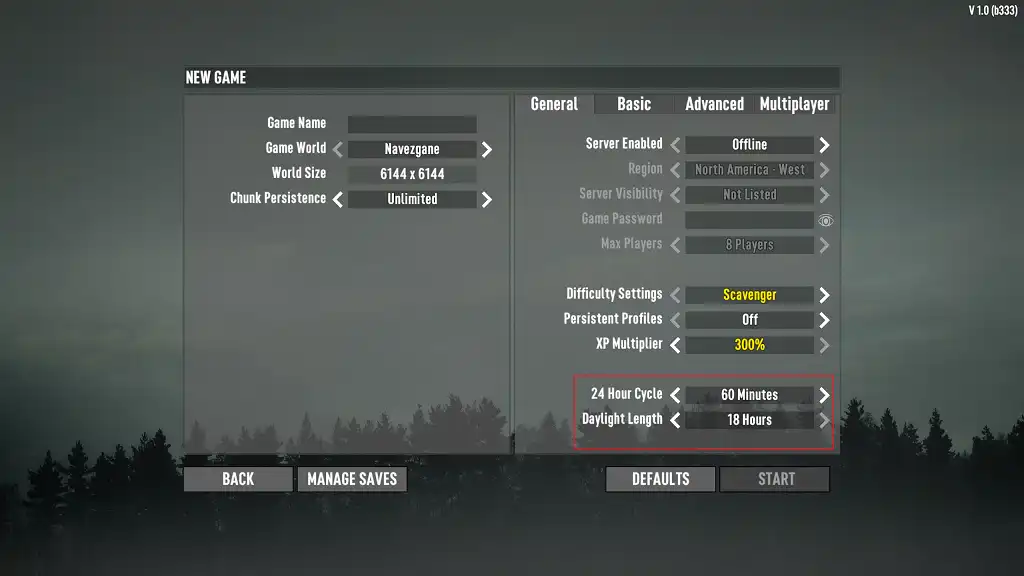 Players can configure the world map’s day and night cycles before starting the game. The length of each cycle is adjustable, which can also affect the game's difficulty. After all, the undead is more active at night than during the day. Certain zombie types can even run at night, making them more challenging to bring down.
Players can configure the world map’s day and night cycles before starting the game. The length of each cycle is adjustable, which can also affect the game's difficulty. After all, the undead is more active at night than during the day. Certain zombie types can even run at night, making them more challenging to bring down.
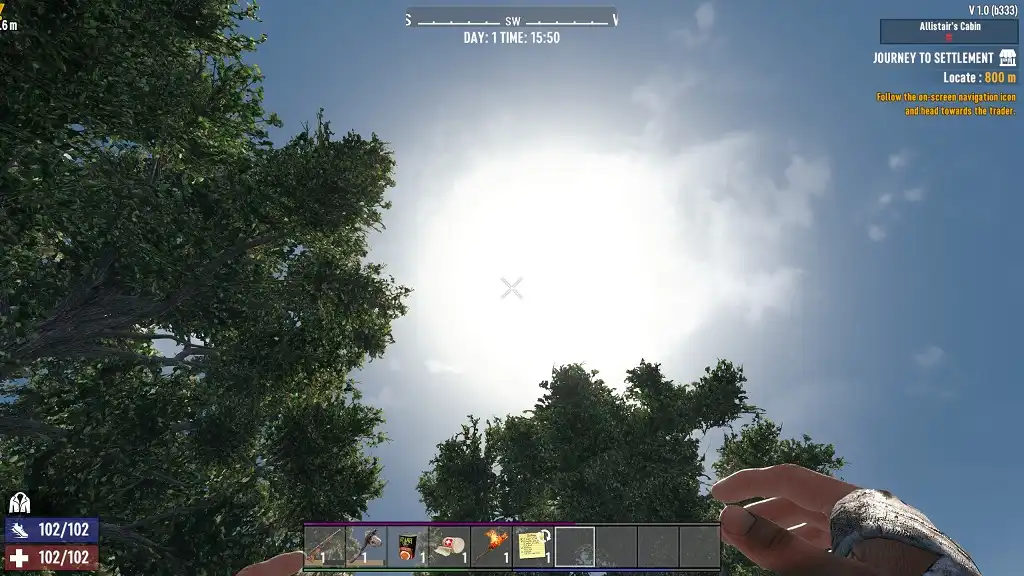 As mentioned earlier, zombies aren’t the only threats to consider. Your survival in 7 Days to Die 1.0 also depends on various factors, including temperature.
Note that clothing, the environment, and weather can affect your character’s temperature in different ways. Debuffs or negative effects appear when your temperature falls outside the 31°F to 99°F (-0.5°C to 37°C) range. These adverse effects include reducing hydration, stamina, speed, and health.
As mentioned earlier, zombies aren’t the only threats to consider. Your survival in 7 Days to Die 1.0 also depends on various factors, including temperature.
Note that clothing, the environment, and weather can affect your character’s temperature in different ways. Debuffs or negative effects appear when your temperature falls outside the 31°F to 99°F (-0.5°C to 37°C) range. These adverse effects include reducing hydration, stamina, speed, and health.
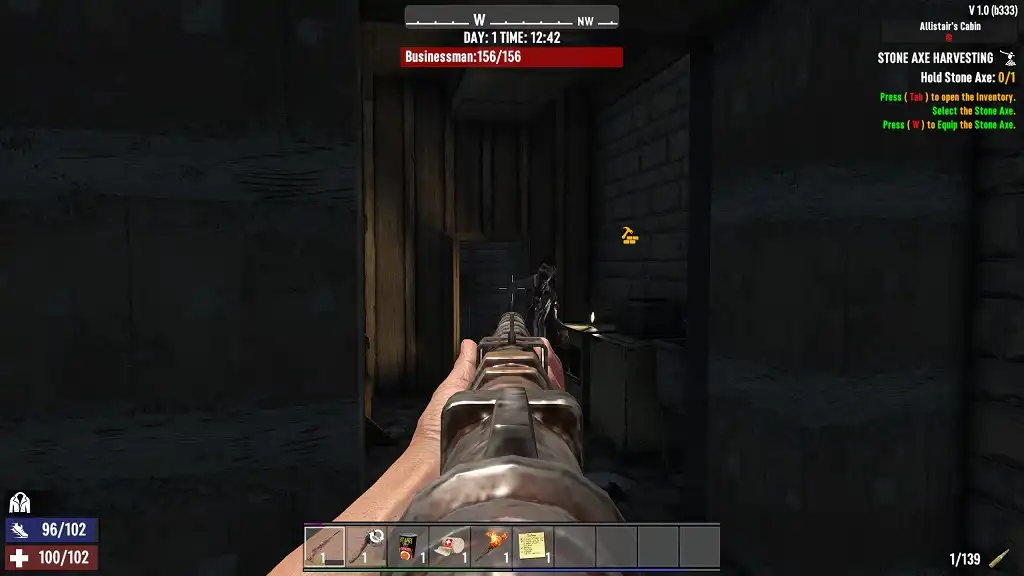 Another part of survival in 7 Days to Die 1.0 is defeating hostile threats. Thankfully, the game offers different methods to deal with these dangers.
For instance, you can craft or pick up various melee or ranged weapons. Bash a zombie’s skull with a baseball bat. Alternatively, fill the bodies of these rotting corpses with bullets from an AK-47 Machine Gun.
Note: A weapon’s quality can affect its damage output.
It’s also possible to sneak up on some zombies and defeat them without alarming nearby enemies. Dealing with a stealthy one-hit-kill blow can also help you save valuable resources you might otherwise spend because of a lengthy combat session.
Additionally, it may be ideal to sneakily defeat some zombies, as weapons and tools in 7 Days to Die can break with significant use. Still, you can repair most items in the game, including blocks and structures.
Moving forward, as of 7 Days to Die 1.0, players can dismember zombie body parts. Dismembering specific body parts promotes various effects. For example, removing a zombie's legs prevents them from walking or running towards you.
Another part of survival in 7 Days to Die 1.0 is defeating hostile threats. Thankfully, the game offers different methods to deal with these dangers.
For instance, you can craft or pick up various melee or ranged weapons. Bash a zombie’s skull with a baseball bat. Alternatively, fill the bodies of these rotting corpses with bullets from an AK-47 Machine Gun.
Note: A weapon’s quality can affect its damage output.
It’s also possible to sneak up on some zombies and defeat them without alarming nearby enemies. Dealing with a stealthy one-hit-kill blow can also help you save valuable resources you might otherwise spend because of a lengthy combat session.
Additionally, it may be ideal to sneakily defeat some zombies, as weapons and tools in 7 Days to Die can break with significant use. Still, you can repair most items in the game, including blocks and structures.
Moving forward, as of 7 Days to Die 1.0, players can dismember zombie body parts. Dismembering specific body parts promotes various effects. For example, removing a zombie's legs prevents them from walking or running towards you.
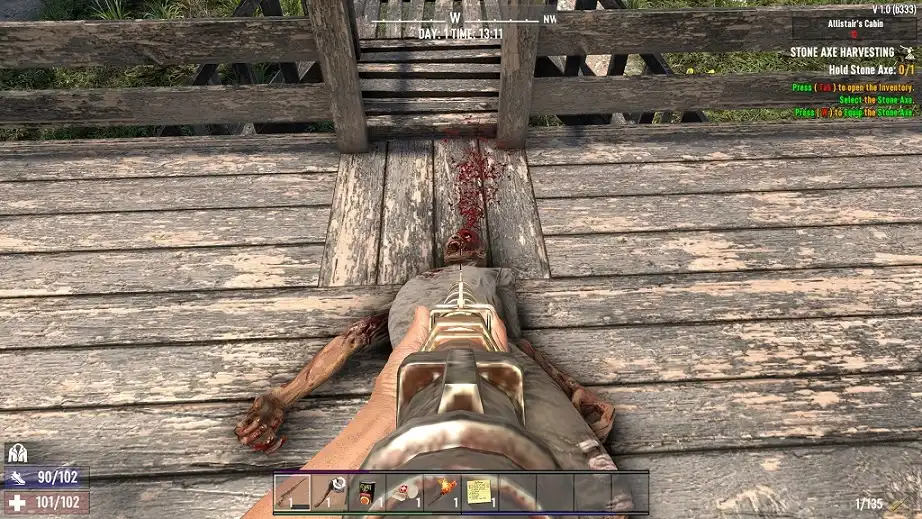 Some zombies adapted to their environments, causing them to adapt and grow. Doing so makes these special undead deadlier than their normal counterparts.
Some special zombies you’ll encounter in 7 Days to Die are the following:
Some zombies adapted to their environments, causing them to adapt and grow. Doing so makes these special undead deadlier than their normal counterparts.
Some special zombies you’ll encounter in 7 Days to Die are the following:
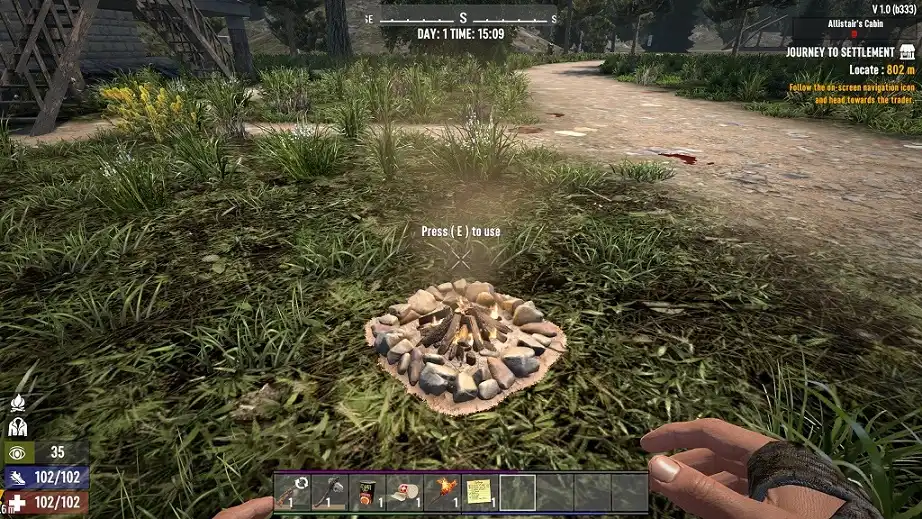 The heatmap in 7 Days to Die is an invisible mechanic that controls zombie spawns based on player activity in specific locations. Placing objects, such as campfires, and doing actions, like firing weapons and chopping trees, contribute to increasing the heatmap.
Once the heatmap reaches a specific level, a Screamer zombie spawns near that area. Failure to dispatch this special zombie immediately can result in an unexpected undead horde.
The heatmap in 7 Days to Die is an invisible mechanic that controls zombie spawns based on player activity in specific locations. Placing objects, such as campfires, and doing actions, like firing weapons and chopping trees, contribute to increasing the heatmap.
Once the heatmap reaches a specific level, a Screamer zombie spawns near that area. Failure to dispatch this special zombie immediately can result in an unexpected undead horde.
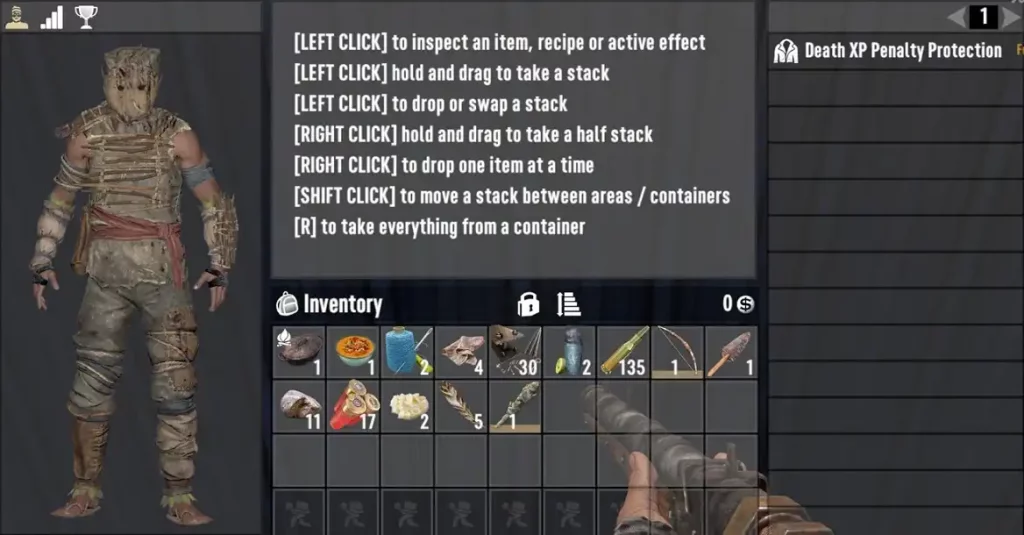 Before 7 Days to Die 1.0, improving survival means wearing different armor or clothing pieces in 10 different body locations. This system has been revamped with the game’s full release. Now, it’s simpler since players need only think about wearing four armor or clothing pieces.
Additionally, wearing a full set grants special effects. For example, a particular lightweight set can give your character a faster running speed and increase maximum stamina. However, this specific set's defensive capabilities leave much to be desired.
Before 7 Days to Die 1.0, improving survival means wearing different armor or clothing pieces in 10 different body locations. This system has been revamped with the game’s full release. Now, it’s simpler since players need only think about wearing four armor or clothing pieces.
Additionally, wearing a full set grants special effects. For example, a particular lightweight set can give your character a faster running speed and increase maximum stamina. However, this specific set's defensive capabilities leave much to be desired.
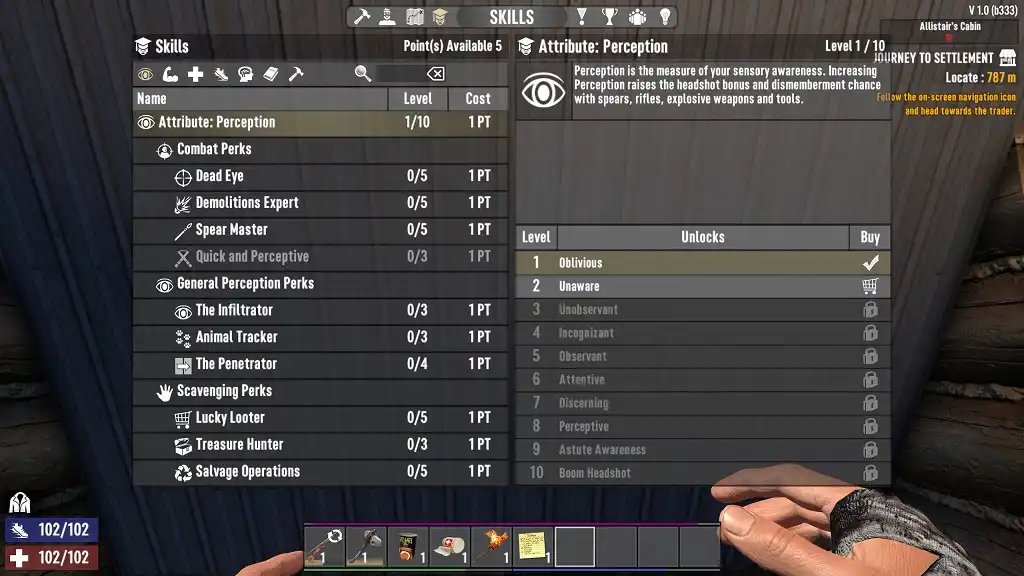 Each player has a level, which increases as you gain experience points (XP). XP can be gained by completing various actions, ranging from foraging grass to killing high-level zombies.
Players gain skill points as they level up. Use these points in various perks and skills, both containing various sub-categories. For instance, some perks can help increase damage with weapons while others boost tool effectiveness.
Each player has a level, which increases as you gain experience points (XP). XP can be gained by completing various actions, ranging from foraging grass to killing high-level zombies.
Players gain skill points as they level up. Use these points in various perks and skills, both containing various sub-categories. For instance, some perks can help increase damage with weapons while others boost tool effectiveness.
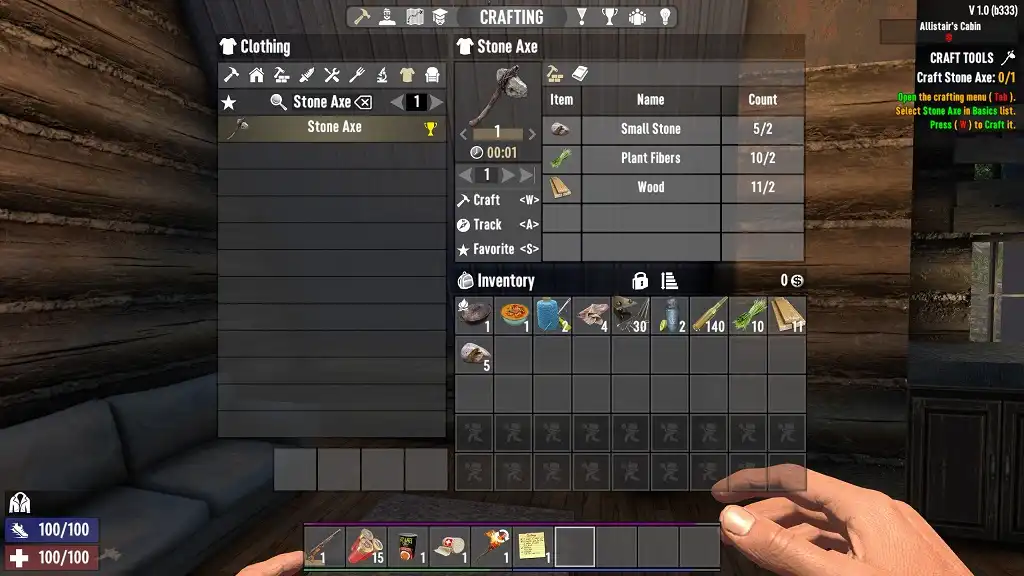 True to its survival nature, 7 Days to Die 1.0 lets players craft various items. Note that the game’s crafting system is reasonably straightforward. However, higher-tier items typically require rare ingredients and specific crafting stations.
True to its survival nature, 7 Days to Die 1.0 lets players craft various items. Note that the game’s crafting system is reasonably straightforward. However, higher-tier items typically require rare ingredients and specific crafting stations.
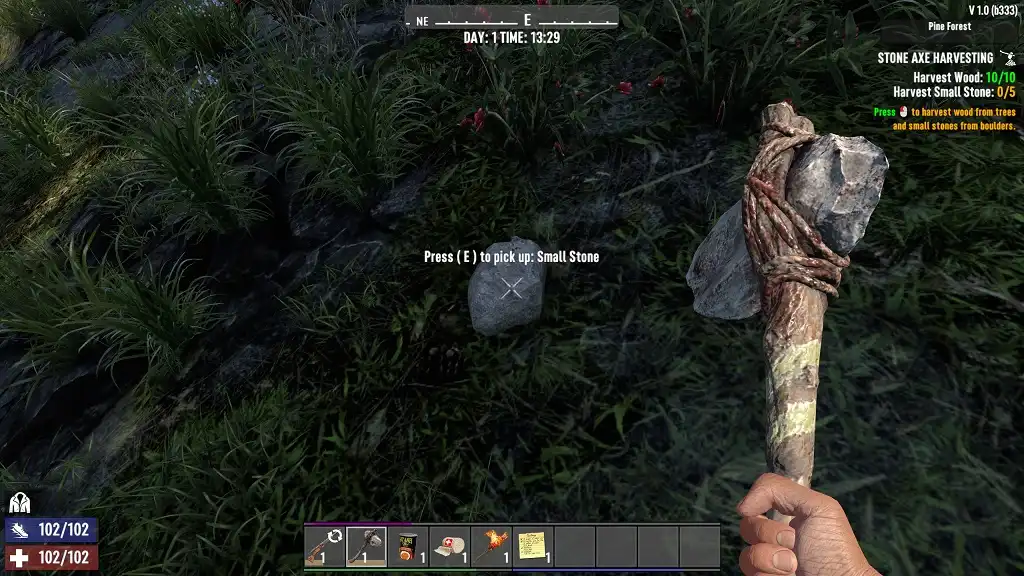 Exploring Navezgane while hunting for crafting ingredients can be dangerous and life-threatening. Increase your survival in 7 Days to Die 1.0 by gathering resources using relatively “peaceful” methods, such as mining and farming.
Farming, in particular, can be done in the comfort of your base. However, your plants need natural sunlight to grow. Artificial light, such as from torches and other lighting fixtures, won’t yield the same effect.
Exploring Navezgane while hunting for crafting ingredients can be dangerous and life-threatening. Increase your survival in 7 Days to Die 1.0 by gathering resources using relatively “peaceful” methods, such as mining and farming.
Farming, in particular, can be done in the comfort of your base. However, your plants need natural sunlight to grow. Artificial light, such as from torches and other lighting fixtures, won’t yield the same effect.
7 Days to Die 1.0 Features & Mechanics
 A player's survival in 7 Days to Die 1.0 typically depends on various factors. These elements range from the game's difficulty setting to selecting your preferred resource-gathering method.
A player's survival in 7 Days to Die 1.0 typically depends on various factors. These elements range from the game's difficulty setting to selecting your preferred resource-gathering method.
Game Modes
 Every new player must choose a game difficulty by selecting a particular mode before loading the Navezgane map. Although the game does a good job of providing a brief explanation for each mode, below are some additional details you may not know about each difficulty setting:
Every new player must choose a game difficulty by selecting a particular mode before loading the Navezgane map. Although the game does a good job of providing a brief explanation for each mode, below are some additional details you may not know about each difficulty setting:
- Scavenger (Easiest): 50% damage from zombies and 200% damage from the player.
- Adventurer (Easy): 75% damage from zombies and 150% damage from the player.
- Nomad (Normal): 100% damage from zombies and 100% damage from the player.
- Warrior (Hard): 150% damage from zombies and 83% damage from the player.
- Survivalist (Harder): 200% damage from zombies and 66% damage from the player.
- Insane (Insane): 250% damage from zombies and 50% damage from the player.
Electricity
 Electricity in 7 Days to Die is a must-have for any post-apocalyptic survivor. Without power, your traps, sensors, lighting fixtures, and other devices are no more than mere decorations in your base. Thankfully, setting up an electrical system in your base is relatively straightforward, albeit you must first fulfill some requirements.
For starters, you must have a power source, and 7 Days to Die offers some options, including the Battery Bank and Generator Bank. Remember to supply batteries or fuel to the power source so it can provide power to connected devices.
Next, use the Wire Tool to connect the power source to nearby devices. Once finished, activate the devices by interacting with the power source. If successful, your devices will come to life.
Additionally, each device requires a specific amount of power to function. Ensure that your power source can provide the necessary output to the connected devices. Otherwise, some of these units will cease functioning.
Electricity in 7 Days to Die is a must-have for any post-apocalyptic survivor. Without power, your traps, sensors, lighting fixtures, and other devices are no more than mere decorations in your base. Thankfully, setting up an electrical system in your base is relatively straightforward, albeit you must first fulfill some requirements.
For starters, you must have a power source, and 7 Days to Die offers some options, including the Battery Bank and Generator Bank. Remember to supply batteries or fuel to the power source so it can provide power to connected devices.
Next, use the Wire Tool to connect the power source to nearby devices. Once finished, activate the devices by interacting with the power source. If successful, your devices will come to life.
Additionally, each device requires a specific amount of power to function. Ensure that your power source can provide the necessary output to the connected devices. Otherwise, some of these units will cease functioning.
World Maps & Points of Interest
 The base map for 7 Days to Die is Navezgane, a desolate world riddled with zombies and other threats. Navezgane is also a static map with various points of interest (POIs), which typically meet players with challenges and loot. Update 1.0 increased the number of POIs players can explore throughout the world map, including Tier 5 ones like the Haven Hotel, 7 Days Suites, and Navezgane Athletics Complex.
Apart from Navezgane, you can generate a random world seed through the main menu. As the feature's name implies, the random world generator creates a map based on various settings.
As of Version 1.0, the random world generator received various updates. These improvements include new biome layouts, visible zombie spawn points, and the return of the burnt forest biome.
The base map for 7 Days to Die is Navezgane, a desolate world riddled with zombies and other threats. Navezgane is also a static map with various points of interest (POIs), which typically meet players with challenges and loot. Update 1.0 increased the number of POIs players can explore throughout the world map, including Tier 5 ones like the Haven Hotel, 7 Days Suites, and Navezgane Athletics Complex.
Apart from Navezgane, you can generate a random world seed through the main menu. As the feature's name implies, the random world generator creates a map based on various settings.
As of Version 1.0, the random world generator received various updates. These improvements include new biome layouts, visible zombie spawn points, and the return of the burnt forest biome.
Player Health
 Like most games, the player dies when your character’s health falls to zero. However, death isn’t the end in 7 Days to Die. Instead, your character respawns at your last save point, which is probably next to your bedroll in your base. Nonetheless, your character may drop items upon death.
Note: Administrators can change Item drop upon death through the server settings.
Thankfully, various in-game items are available to help prevent an early death. In particular, you can find various restorative items, such as food and medical supplies, while exploring the world map.
Nonetheless, it's important not to be complacent, as various threats exist in 7 Days to Die. In addition to the typical zombie threat, falling, drowning, and other environmental effects can also reduce player health.
Note: Add points to the Fortitude Skill to increase maximum health.
Like most games, the player dies when your character’s health falls to zero. However, death isn’t the end in 7 Days to Die. Instead, your character respawns at your last save point, which is probably next to your bedroll in your base. Nonetheless, your character may drop items upon death.
Note: Administrators can change Item drop upon death through the server settings.
Thankfully, various in-game items are available to help prevent an early death. In particular, you can find various restorative items, such as food and medical supplies, while exploring the world map.
Nonetheless, it's important not to be complacent, as various threats exist in 7 Days to Die. In addition to the typical zombie threat, falling, drowning, and other environmental effects can also reduce player health.
Note: Add points to the Fortitude Skill to increase maximum health.
Day and Night Cycles
 Players can configure the world map’s day and night cycles before starting the game. The length of each cycle is adjustable, which can also affect the game's difficulty. After all, the undead is more active at night than during the day. Certain zombie types can even run at night, making them more challenging to bring down.
Players can configure the world map’s day and night cycles before starting the game. The length of each cycle is adjustable, which can also affect the game's difficulty. After all, the undead is more active at night than during the day. Certain zombie types can even run at night, making them more challenging to bring down.
Temperature
 As mentioned earlier, zombies aren’t the only threats to consider. Your survival in 7 Days to Die 1.0 also depends on various factors, including temperature.
Note that clothing, the environment, and weather can affect your character’s temperature in different ways. Debuffs or negative effects appear when your temperature falls outside the 31°F to 99°F (-0.5°C to 37°C) range. These adverse effects include reducing hydration, stamina, speed, and health.
As mentioned earlier, zombies aren’t the only threats to consider. Your survival in 7 Days to Die 1.0 also depends on various factors, including temperature.
Note that clothing, the environment, and weather can affect your character’s temperature in different ways. Debuffs or negative effects appear when your temperature falls outside the 31°F to 99°F (-0.5°C to 37°C) range. These adverse effects include reducing hydration, stamina, speed, and health.
Combat
 Another part of survival in 7 Days to Die 1.0 is defeating hostile threats. Thankfully, the game offers different methods to deal with these dangers.
For instance, you can craft or pick up various melee or ranged weapons. Bash a zombie’s skull with a baseball bat. Alternatively, fill the bodies of these rotting corpses with bullets from an AK-47 Machine Gun.
Note: A weapon’s quality can affect its damage output.
It’s also possible to sneak up on some zombies and defeat them without alarming nearby enemies. Dealing with a stealthy one-hit-kill blow can also help you save valuable resources you might otherwise spend because of a lengthy combat session.
Additionally, it may be ideal to sneakily defeat some zombies, as weapons and tools in 7 Days to Die can break with significant use. Still, you can repair most items in the game, including blocks and structures.
Moving forward, as of 7 Days to Die 1.0, players can dismember zombie body parts. Dismembering specific body parts promotes various effects. For example, removing a zombie's legs prevents them from walking or running towards you.
Another part of survival in 7 Days to Die 1.0 is defeating hostile threats. Thankfully, the game offers different methods to deal with these dangers.
For instance, you can craft or pick up various melee or ranged weapons. Bash a zombie’s skull with a baseball bat. Alternatively, fill the bodies of these rotting corpses with bullets from an AK-47 Machine Gun.
Note: A weapon’s quality can affect its damage output.
It’s also possible to sneak up on some zombies and defeat them without alarming nearby enemies. Dealing with a stealthy one-hit-kill blow can also help you save valuable resources you might otherwise spend because of a lengthy combat session.
Additionally, it may be ideal to sneakily defeat some zombies, as weapons and tools in 7 Days to Die can break with significant use. Still, you can repair most items in the game, including blocks and structures.
Moving forward, as of 7 Days to Die 1.0, players can dismember zombie body parts. Dismembering specific body parts promotes various effects. For example, removing a zombie's legs prevents them from walking or running towards you.
Zombies
 Some zombies adapted to their environments, causing them to adapt and grow. Doing so makes these special undead deadlier than their normal counterparts.
Some special zombies you’ll encounter in 7 Days to Die are the following:
Some zombies adapted to their environments, causing them to adapt and grow. Doing so makes these special undead deadlier than their normal counterparts.
Some special zombies you’ll encounter in 7 Days to Die are the following:
- Burn Victim: Delivers additional contact damage and can set players ablaze.
- Crawler: Crawls on the ground and ambushes players.
- Demolisher: A C4-wearing special zombie.
- Feral Wight: Always spawns with the feral modifier.
- Infected Police Officer: A zombie with a high maximum health.
- Screamer: Screams and attracts nearby zombies to its location.
- Spider Zombie: A zombie that runs on all fours and can launch a stunning web attack.
- Team Z Player Football Zombie: Charges at players for a high-damaging tackle attack.
Heatmap
 The heatmap in 7 Days to Die is an invisible mechanic that controls zombie spawns based on player activity in specific locations. Placing objects, such as campfires, and doing actions, like firing weapons and chopping trees, contribute to increasing the heatmap.
Once the heatmap reaches a specific level, a Screamer zombie spawns near that area. Failure to dispatch this special zombie immediately can result in an unexpected undead horde.
The heatmap in 7 Days to Die is an invisible mechanic that controls zombie spawns based on player activity in specific locations. Placing objects, such as campfires, and doing actions, like firing weapons and chopping trees, contribute to increasing the heatmap.
Once the heatmap reaches a specific level, a Screamer zombie spawns near that area. Failure to dispatch this special zombie immediately can result in an unexpected undead horde.
Armor/Clothing
 Before 7 Days to Die 1.0, improving survival means wearing different armor or clothing pieces in 10 different body locations. This system has been revamped with the game’s full release. Now, it’s simpler since players need only think about wearing four armor or clothing pieces.
Additionally, wearing a full set grants special effects. For example, a particular lightweight set can give your character a faster running speed and increase maximum stamina. However, this specific set's defensive capabilities leave much to be desired.
Before 7 Days to Die 1.0, improving survival means wearing different armor or clothing pieces in 10 different body locations. This system has been revamped with the game’s full release. Now, it’s simpler since players need only think about wearing four armor or clothing pieces.
Additionally, wearing a full set grants special effects. For example, a particular lightweight set can give your character a faster running speed and increase maximum stamina. However, this specific set's defensive capabilities leave much to be desired.
Character Leveling, Skills, & Perks
 Each player has a level, which increases as you gain experience points (XP). XP can be gained by completing various actions, ranging from foraging grass to killing high-level zombies.
Players gain skill points as they level up. Use these points in various perks and skills, both containing various sub-categories. For instance, some perks can help increase damage with weapons while others boost tool effectiveness.
Each player has a level, which increases as you gain experience points (XP). XP can be gained by completing various actions, ranging from foraging grass to killing high-level zombies.
Players gain skill points as they level up. Use these points in various perks and skills, both containing various sub-categories. For instance, some perks can help increase damage with weapons while others boost tool effectiveness.
Crafting
 True to its survival nature, 7 Days to Die 1.0 lets players craft various items. Note that the game’s crafting system is reasonably straightforward. However, higher-tier items typically require rare ingredients and specific crafting stations.
True to its survival nature, 7 Days to Die 1.0 lets players craft various items. Note that the game’s crafting system is reasonably straightforward. However, higher-tier items typically require rare ingredients and specific crafting stations.
Resource Gathering
 Exploring Navezgane while hunting for crafting ingredients can be dangerous and life-threatening. Increase your survival in 7 Days to Die 1.0 by gathering resources using relatively “peaceful” methods, such as mining and farming.
Farming, in particular, can be done in the comfort of your base. However, your plants need natural sunlight to grow. Artificial light, such as from torches and other lighting fixtures, won’t yield the same effect.
Exploring Navezgane while hunting for crafting ingredients can be dangerous and life-threatening. Increase your survival in 7 Days to Die 1.0 by gathering resources using relatively “peaceful” methods, such as mining and farming.
Farming, in particular, can be done in the comfort of your base. However, your plants need natural sunlight to grow. Artificial light, such as from torches and other lighting fixtures, won’t yield the same effect.Create your own
7 Days to Die server
7 Days to Die server
Choose a plan, pick a game, and play with your friends!
Join our Newsletter
Subscribe for the latest updates on all things gaming!
How would you rate this blog?
Share your opinion and help us make our blogs even better!
Didn't like
Neutral
Liked
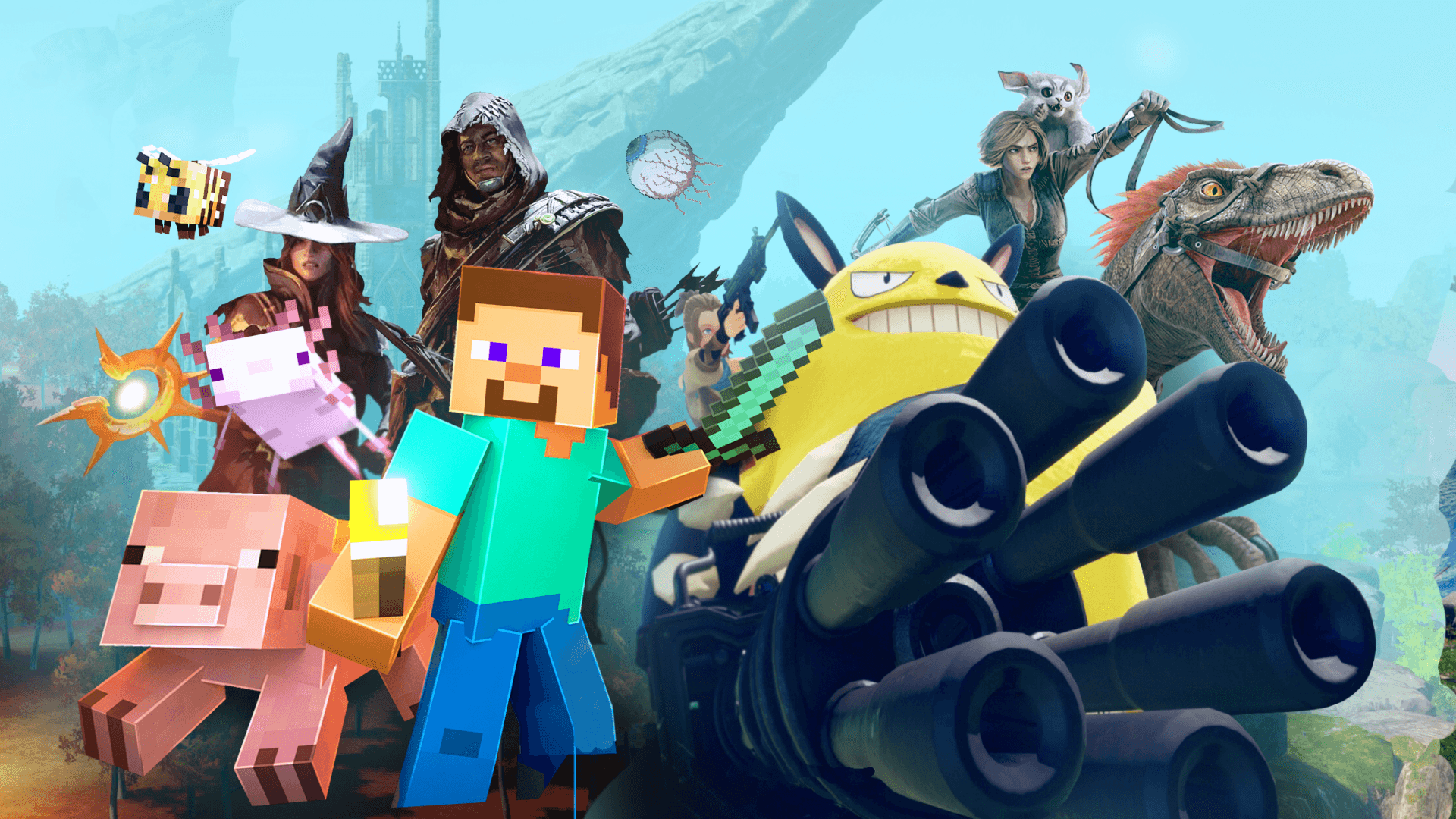
Need a game server?
Rent a game server where you and your friends can play privately with low latency and custom settings. Choose from 70+ games, invite people from around the globe, and enjoy private matches, or build your own online community with your own rules.

Relevant Blogs

GET THE INSIDE SCOOP!
Join our email for updates on our hosted games, company news and exclusive deals. Stay in the loop!
